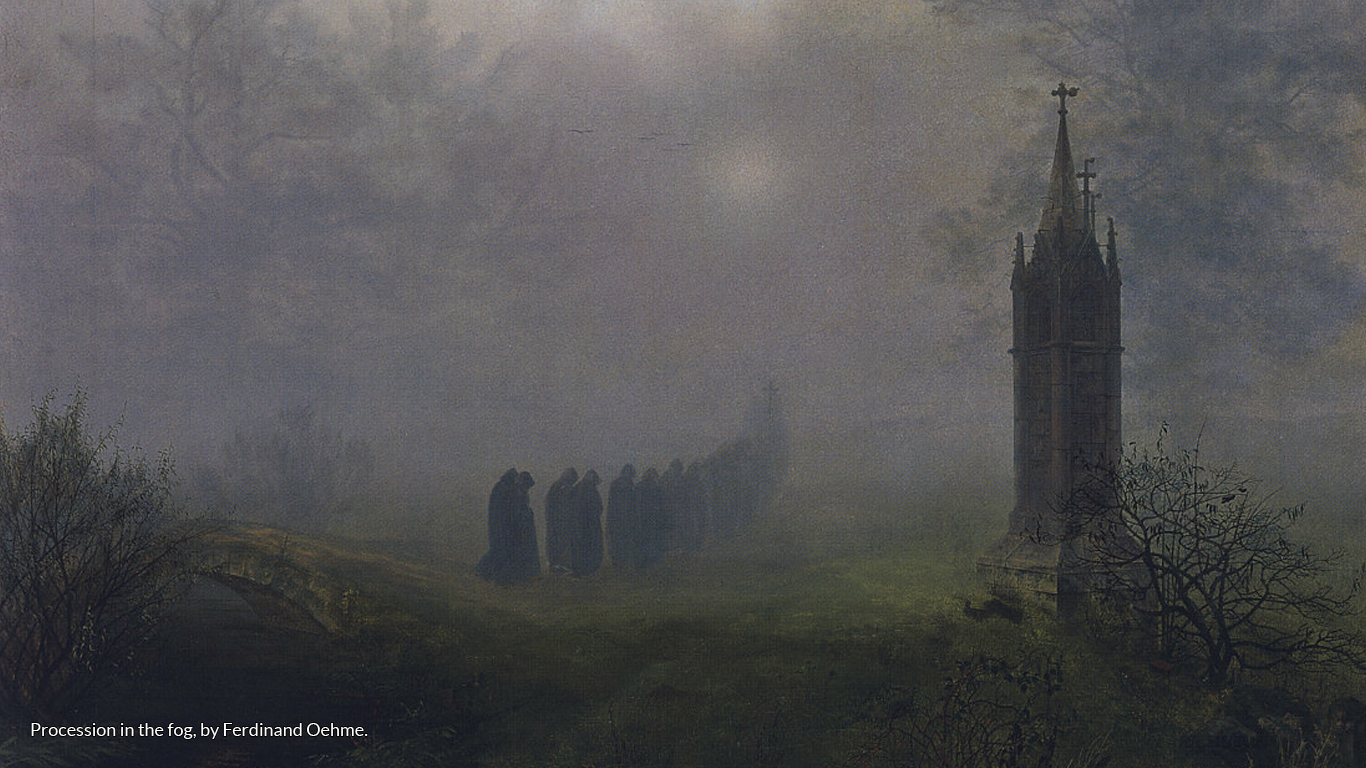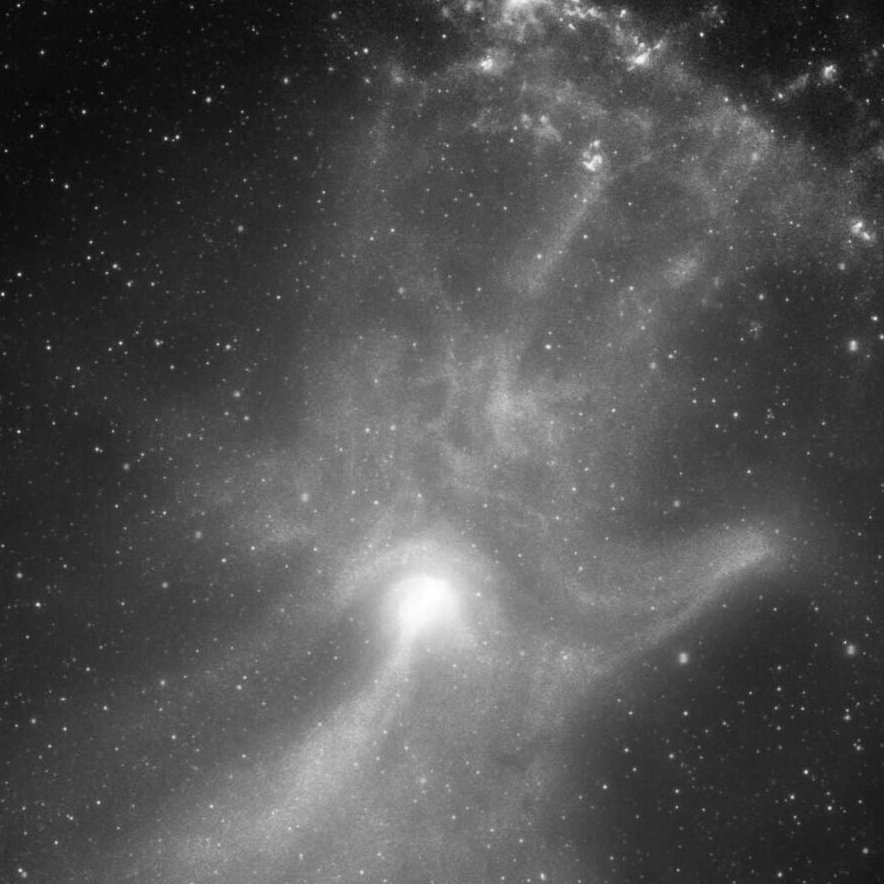There was once a nun, identified in mystical theology only as Sister M.G., who had died and gone to purgatory. In a revelation granted an imprimatur by the Church, this deceased nun told a living nun in 19th-century France that she had been in lowest level of purgatory, what she called the “great purgatory,” where there was great pain, and was now in a middle area.
In most cases, we have to be careful of these things. The Bible tells us that speaking to the dead is “necromancy.” No one should seek to do it, and when it comes as a revelation (as opposed to necromancy) it has to be discerned by competent experts.
That was the case with Sister M.G., who died in a French convent during the 1800s and began appearing to a living nun to warn of punishment after death. After years of testing the spirits, Church authorities discerned it as a holy revelation, one that shed enormous light on the afterworld and explained that purgatory not only exists but has many levels, some daunting. The lowest level, said this nun, was like hell.
Where there was suffering akin to fire in the lower depth (similar to hell), the middle area was more than anything a place, she said, of loneliness, a yearning to be in the presence of God. At Medjugorje it has been described as a huge area filled with grayness and fog. There is moaning and crying and yet the knowing that someday the soul will be with God.
Those who had what seem like credible insights into purgatory inform us of a number of fascinating facts. It was Sister M.G.’s claim that most souls are taken from purgatory not on All Souls’ Day, as we might think, but on Christmas Day. This corresponds in remarkable fashion with a similar statement from the apparition site of Medjugorje.
She also commented on interactions between souls.
“Souls communicate with each other when God permits it, and after the manner of souls, but without words,” said Sister M.G., who had been in the same convent as the recipient nun.
What are other levels like?
In the second purgatory, said the nun, “are souls of those who died with venial sins not fully expiated before death, or with mortal sins that have been forgiven but for which they have not made entire satisfaction to the Divine Justice. In this part of purgatory, there are also different degrees according to the merits of each soul.”
Lastly, said Sister M.G., “there is the purgatory of desire which is called the Threshold. Very few escape this. To avoid it altogether, one must ardently desire heaven and the Vision of God. That is rare, rarer than people think, because even pious people are afraid of God and have not, therefore, sufficiently strong desire of going to heaven. This purgatory has its very painful martyrdom like the others. The deprivation of the sight of our loving Jesus adds to the intense suffering. It is a continuous martyrdom. It makes me suffer more than does the fire of purgatory. It is so beautiful in Heaven. There is a great distance between purgatory and heaven. We are privileged at times to catch a glimpse of the joys of the blessed in paradise, but it is almost a punishment. It makes us yearn to see God. In Heaven it is pure delight; in purgatory, profound darkness. Oh, how I desire to go to heaven! What a martyrdom we suffer once we have seen God!”
And so this is the key: wanting badly enough to go to heaven. It is something we must all yearn for, pray for, desire with the very fiber of our being — and do so constantly. We have to want to be with God badly enough. If not, there is purgatory, and the average stay, claimed Sister M.G., was comparable to 30 to 40 years of earth time. “Your whole heart and soul must be submerged in Him,” said the nun about attaining heaven, “so that you do nothing except what is His pleasure. Rise above earthly things and your surroundings to lose yourself entirely in His Will.”
According to Santa Francesca Romana (notes the Mystic Post), purgatory, the “Kingdom of Sorrows,” is divided into two great regions: the upper one where the souls suffering from harm are found, those who can not see God, and less serious penalties for non-serious guilt orders; here purgatory consists in an infinite nostalgia for God and his beatific vision.
Santa Maria Maddalena Pazzi states that: “The pains of Purgatory are great, atrocious, impossible to express themselves with human words. All the pains suffered by martyrs, in comparison, are like a pleasant garden. “
Once in purgatory, a soul is desperate for our prayers. Many cannot pray for themselves. They are dependent on us. A single Mass can raise a soul to a much higher level, or even spring that soul into heaven. A Hail Mary or Our Father can mean the world for a soul on this spiritual desert. We must always remember our deceased and also those who have no one praying for them. Let us remember this every day and especially November 2 (All Souls Day).
In an interview with a priest, Father Livio Fanzaga of Radio Maria, Medjugorje seer Vicka Ivankovic-Mijatovic said, “Purgatory is also a great space. In purgatory, however, you do not see people, but only you see a great fog and you feel … It feels like people are suffering. You know, you hear noises … You can not say that you hear blows or even feel cries. There are no people seen there. It is not like Heaven. It feels like they are suffering. It is a suffering of a different kind. You hear voices and even noises, like one beating … I could not see. It is difficult, Father Livio, to explain something that you do not see. One thing is feeling and another is seeing. In Heaven you see that they walk, they sing, they pray, and so you can report it accurately. In purgatory only a great fog can be seen. The people who are there wait for our prayers to be able to go to Heaven as soon as possible.”
Mostly we must love. Maybe, in these angry times, you don’t want to hear that. You must. I have emphasized this before. While on earth we have many trials; it is a constant minute-to-minute struggle. And we have to invoke the Holy Spirit to transcend the devil’s temptations and finish this life pure and filled with love. That is the route — the only route — to Heaven.
–MHB
[resources: the nun’s revelations are in Unpublished Manuscript on Purgatory, Secrets of Purgatory, The Letter from Beyond, After Life, The Other Side; see also, What You Take To Heaven]
[picture of fog is from ‘Purgatory in Spanish Folklore’]



